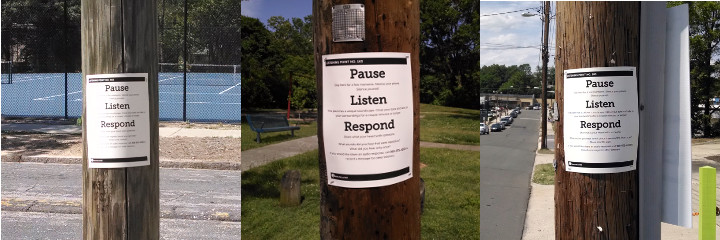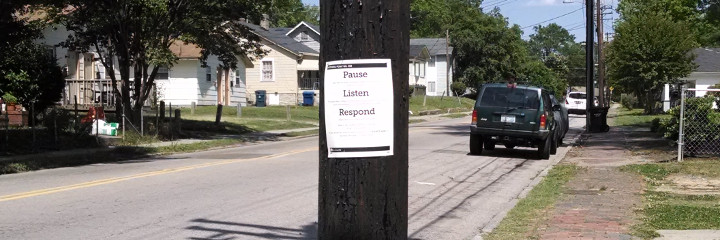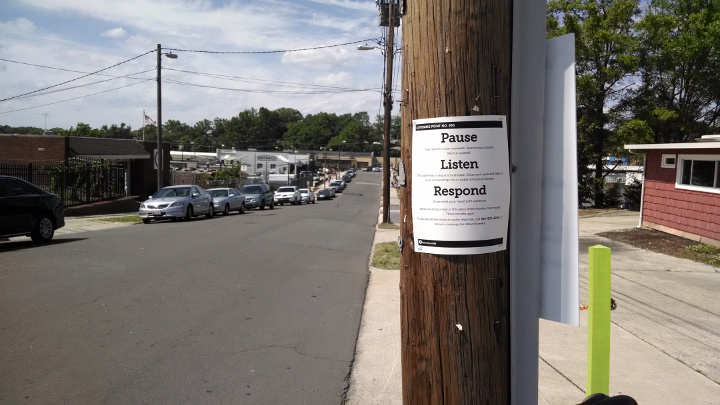I sometimes like to joke that, as an undergraduate, I majored in listening. As a composer and language student, it really wasn’t much of a stretch. Fast forward to today, however, and I am much more likely to find myself speaking with colleagues about looking than listening.
Recently, I started a new project attempting to bring some of the inquiry-based practices that I use in the art museum and classroom to a public audience through a series of what I am calling “listening points.”

Put simply, a listening point is a sign that invites passers-by to pause, listen to their environment, and respond. Accompanying the sign is a custom-built voice message system through which participants can leave an anonymous recording of their response to a listening experience. After leaving a response of their own, the system plays a random recording from another listener who responded to the same listening point.
There are currently about 15 listening points throughout Durham, situated in diverse soundscapes that feature natural, human, and technological sounds. This initial group of points is only the first step in what I hope will become a larger project that encourages communities to listen closely and critically to their soundscapes. As more and more individuals encounter the listening point signs in public and share their experiences, I hope to continue to develop all parts of the project so as to encourage greater participation and deeper engagement.

The general idea for listening points has been simmering in my mind for a couple years. Though I originally envisioned leading an organized series of soundwalks or outdoor “concerts” (essentially facilitated aestheticized listening experiences in public places with interesting soundscapes), I feel that the self-directed approach offered by a loose network of listening points may prove to be more interesting and transformative.
What’s next? I hope to continue to roll out more listening points in Durham and bring them to other cities as well. As I begin to see how folks are interacting with the current signs and voice message system, I will continue to refine those parts of the project. Meanwhile, I’m working on refining some of my goals for the project and situating it within a larger conceptual framework.
I’ve shared the words of R. Murray Schafer many times before, but in his introduction to A Sound Education: 100 Exercises for Listening and Sound-Making, he describes a vision very similar to my own with regard to the transformative potential of listening experiences:
I believe that the way to improve the world’s soundscape is quite simple. We must learn how to listen. It seems to be a habit we have forgotten. We must sensitize the ear to the miraculous world of sound around us. After we have developed some critical acumen, we may go on to larger projects with social implications so that others may be influenced by our experiences. The ultimate aim would be to begin to make conscious design decisions affecting the soundscape about us. (11)
I’m excited to continue working on this project and see how it transforms in the months ahead. At the very least, I hope that I can help some people who have forgotten how to listen to tune in to the “miraculous world of sound” they inhabit.
